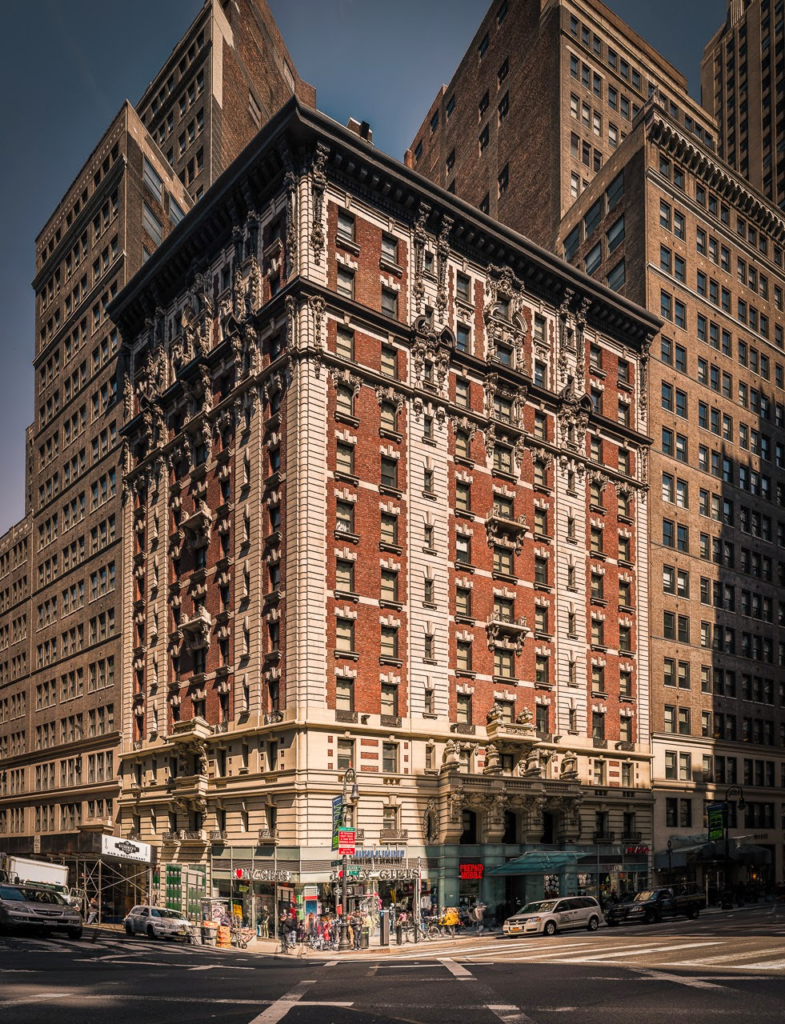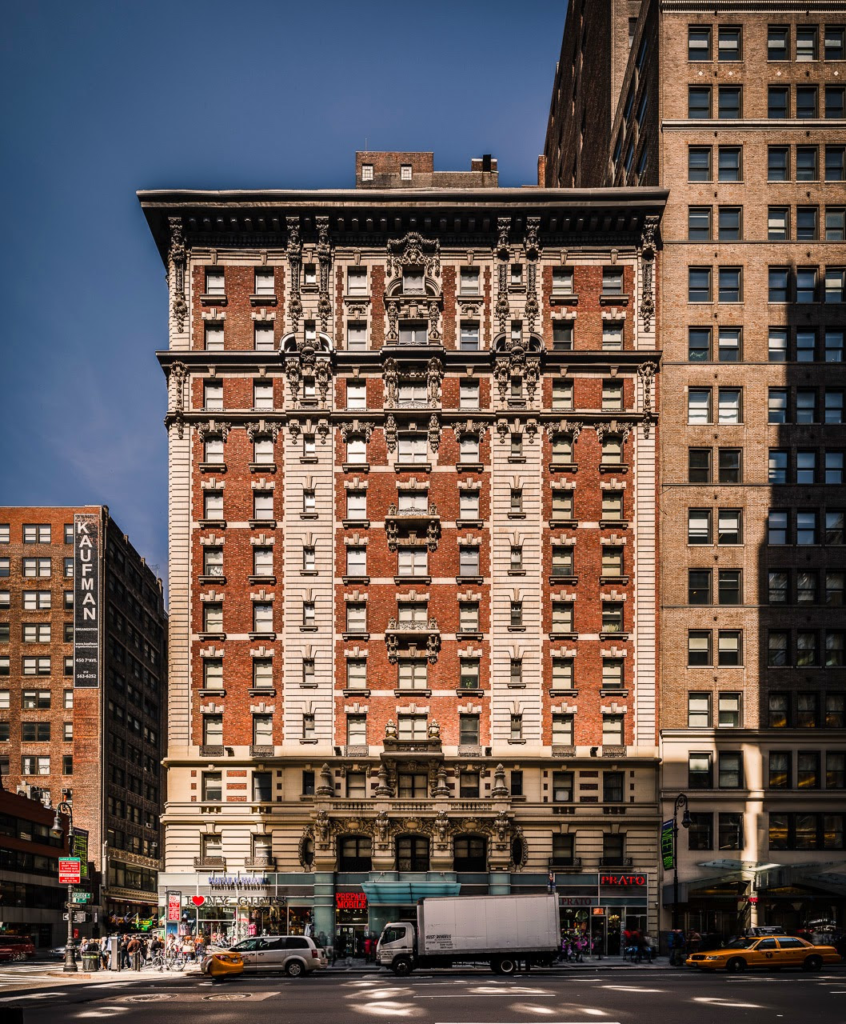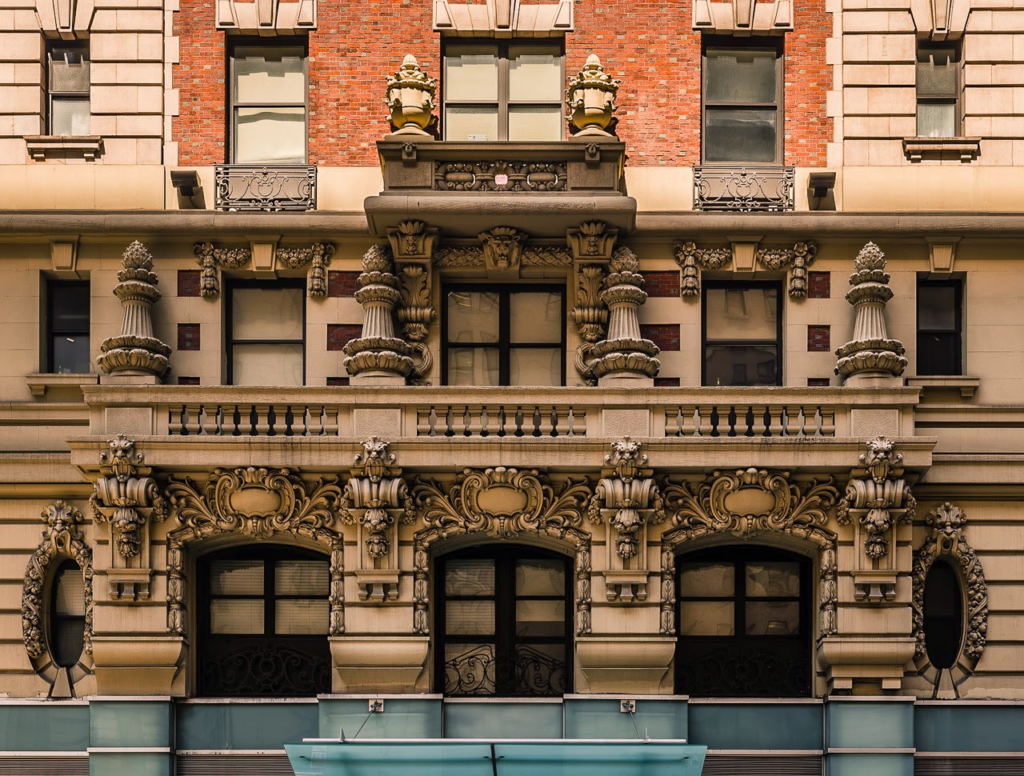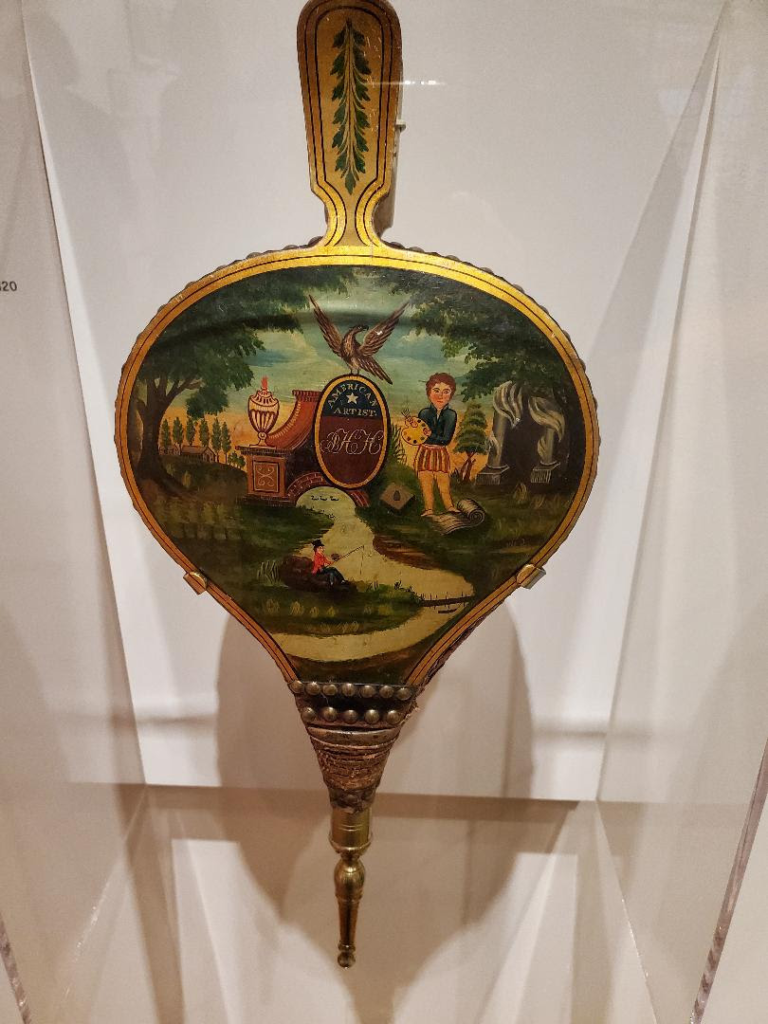Monday, October 23, 2023 – A HOTEL WITH AN OPERA HISTORY AND GREAT TALES


OUR HEARTS GO OUR TO OUR FRIENDS, FAMILIES AND NEIGHBORS IN ISRAEL

FROM THE ARCHIVES
MONDAY, OCTOBER 23, 2023
The 1903 Hotel York
No. 488 7th Avenue
DAYTONIAN IN MANHATTAN
ISSUE# 1107

photo by Nicolas Lemery Nantel / salokin.com
At the turn of the last century the neighborhood north of 34th Street and west of Fifth Avenue was a mish-mash of old brick-faced houses and small commercial buildings four or five stories tall. The millinery and apparel districts had already begun inching northward; but it would be several years before the neighborhood would earn the title of The Garment District. Instead, now, it was the theaters and entertainment houses around Herald Square that drew the most attention.
But on December 12, 1901 the Pennsylvania Railroad made an announcement that would change the area forever. The company planned to spent $150 million to join New Jersey and Manhattan with an under-river railroad tunnel terminating in a monumental station facing engulfing Seventh to Eighth Avenues from 31st Street to 33rd Streets—the Pennsylvania Station.
Developers were quick to recognize the potential in the surrounding blocks—soon to be swarming with businessmen and tourists coming and going from the station. Within the year ground was broken for R. H. Macy’s enormous department store facing 34th Street, far above the established shopping district, and brothers James and David Todd laid plans for upscale hotels.
At the time of the Pennsylvania Railroad’s announcement the Doherty brothers, John and William, lived in the house at No. 488 Seventh Avenue. William was an architect and John earned a living as a mason. The Dohertys would soon be moving out.
James and David Todd engaged architect Harry B.Mulliken to design the Aberdeen Hotel at No. 17 West 32nd Street. Ground was broken in 1902, the same year that Mulliken teamed with Edgar J. Moeller to form the partnership of Mulliken & Moeller. Perhaps that firm’s firm commission was also for the Todds—another hotel nearby on the side of the Doherty house and its neighbors at the corner of Seventh Avenue and 36th Street—the Hotel York.
Completed in 1903 the Hotel York was a standout. A two story base of rusticated limestone was topped by a third floor of planar stone. Above this nine stories of red brick and limestone erupted skyward in a profusion of turn-of-the-century architectural ostentation. A residential wedding cake, the Beaux Arts façade was frosted with carved urns, garlands, cartouches, and grotesques. Balconies of carved stone or cast iron broke the flat planes

| The facade boiled over with carved ornamentation. photo by Nicolas Lemery Nantel / salokin.com |
The Hotel York opened as both a transient and residential hotel. The lavish public spaces mimicked the exterior with gushing molded plaster festoons and scrollwork, marble columns and expensive carpeting and draperies. Guests and residents enjoyed amenities like the in-house barber shop. The hotel’s proximity to the theater district made it an immediate favorite with the acting profession

| The elaborate public rooms were often the scene of formal functions — photo by Byron Company, from the collection of the Museum of the City of New York |
Among the first of these was well-known actor E. M. Holland. In February 1904 the 56-year old was much annoyed with hotel security. He lived in room 455 on the 10th floor on and February 7 went to bed with his door open. According to The Sun the following day, “When he woke up his overcoat, a derby hat and $17 in money were gone.”

| Holland dressed for his part as Eben Holden in 1901 — copyright expired |
The newspaper noted that “Holland was pretty sore over his loss.” His professional pride was perhaps bruised since, at the time, he was playing the great detective Bedford in the play Raffles.
Also living in the hotel at the time were, according to The Sun, “Mrs. Nellie Stevens, an actress out of a job, and her friend, a Miss Goodrich, an actress in better luck.” In November that year the two women met at the Liberty Theatre to see a play. Nellie Stevens was running late and tossed her rings into a handkerchief, hoping to save time by putting them on in the hansom cab.
No sooner had she settled into her seat in the theater than she noticed one of her rings—a diamond valued at $400 (about $10,000 today) was missing. She rushed back to the York Hotel and notified the house detective Andrew Hanley. He traced the cab back to Sullivan’s Stables on West 35th Street; only to find out that in the day or two it took him to track it down the cabbie, James Lawrence, had been laid off.
When Lawrence arrived back at the stables on November 14 to pick up his pay the detective was notified. He and Mrs. Stevens rushed the one-block distance to confront him. Lawrence admitted to finding the ring, stuck his hand in his pocket and announced “And here it is.”
“Mrs. Stevens, with a little shriek of joy and gratitude, seized the ring. She looked at it. Then she shrieked again.,” said The Sun.
It wasn’t her ring. “This is a phony diamond. The ring is a ringer, and a poor ringer at that,” she exclaimed. She pressed charges of grand larceny against cabbie with grand larceny. But she was out a diamond ring, nevertheless.
Another actress to cross the threshold of the Hotel York was the young and beautiful Evelyn Nesbit. She had been married to millionaire Harry Kendall Thaw in 1904; however she carried on a dalliance with architect Stanford White. The affair would end with the renowned architect dead on the floor of his magnificent Madison Square Garden on June 25, 1906, the victim of an enraged husband.
During the murder trial, White’s chauffeur testified to driving Evelyn here and there on certain occasions, including one night in September 1905 when he dropped her off at the Hotel York.

| A long, permanent marquee sheltered arriving guests from the elements — photo by Irving Underhill, from the collection of the Museum of the City of New York |
| On October 26, 1907 the new Italian conductor of the Metropolitan Opera House arrived from Europe and moved into his apartments in the hotel. The famed conductor would be in friendly surroundings—the Hotel York was a favorite home for many of the opera house’s singers and workers. Not all the residents, of course, were in the theater. Mining engineer Thomas R. Marshall lived here in 1907, and earlier that year the hotel had been forced into the awkward situation of evicting a Duke. In 1904, a day or two following his brother James B. Duke’s wedding, tobacco millionaire Brodie Duke went on a binge of drinking and partying. The spree lasted for several days and along for the ride much of the time was Alice Webb, whose reputation was not altogether without stain. On December 19, 1904 the pair was married in the Madison Square Presbyterian Church—although Brodie later denied remembering any of it. Duke won a divorce decree on March 27, 1906 and a year later Alice was living in the York Hotel. But on May 2, 1907 the hotel was forced to evict the 38-year old for failing to pay her board. On Saturday night, two days later, around 9:30 she showed up at the hotel drunk “and was unable to take care of herself,” according to the New-York Tribune. “She rejected an offer of the clerk who wished to show her to a room, to protect her, and she left the hotel.” While the Duke name was normally engraved on invitations to the balls and dinners at the highest levels of Manhattan society; that night it would be written in the ledger of the West 38th Street police station. Alice Duke was arrested around midnight incapacitated with drink. “The woman was well dressed. She wore a big straw hat and big pearl earrings,” said the Tribune. She had with her “numerous bonds and several thousand dollars of stock of the American Tobacco Company.” The following year on December 1 the Todds sold the Hotel York to Columbia University professor William M. Sloane for $825,000—a substantial $20 million in today’s dollars. Seven days later Sloane resold the property to the Stanworth Company of which Sloane was a director. The English actress Maud Odell, known in the theatrical world as “The $10,000 English beauty,” was staying in the York while playing at the American Theatre in November 1909. She was terrified when she received a letter threatening to disfigure her face with acid. “If you do not pay Mr. Mudd $100 on Wednesday following your matinee performance do not be surprised to be shot during your next performance or to have your face marred by acid. A man will come up to you and say, ‘Have you a package for Mr. Mudd?’ Then you are to turn over to him a package containing 100 iron men. Do not notify the cops; they will not do you any good. You will see this insignia in your sleep.” The unsigned letter bore a sketch of three daggers forming a triangle above a larger dagger. Police were notified by the theater’s agent and a few days later the actress received a second envelope. In it was a card with the words “La Signa Monte Secunda” and the triangle of daggers—this time with a numeral 3 in the center. Understandably, the Edwardian actress became hysterical. Two detectives were assigned to escort her back and forth between the York Hotel and the theater in a taxi. |
| After the completion of Pennsylvania Station in 1910, the Hotel York was quick to market its location, a “two minute walk.” The hotel still soared above the neighboring buildings. The Italian opera singers sometimes upset the harmony of the upscale residence hotel and it all came to a head in April 1911 when singers Didur, Gilly, Pini-Corsi, and Rossi; the chorus master Romel; and the Italian conductor Signor Podesti were told to leave. Both Podesti and Didur lived in suites with their wives; the others were single. Trouble came when the conductor’s wife tried to scrimp by cooking Italian dishes in their rooms. “The Italian singers, being of a thrifty disposition, did not eat at the hotel, but preferred the restaurants run by their own countrymen, where they could get macaroni and spaghetti flavored with the grated cheese and washed down with flasks of red chianti,” explained The New York Times. That was all well and good until Signora Podesi bought a chafing dish and, according to the newspaper, “prepared with a spoonful of butter, a grating of full-flavored cheese, an onion, grated bread crumbs and a strong suspicion of garlic, suppers for herself and spouse. The odor of this dish spread along the corridor, it is said, to the rooms occupied by a learned professor from Chicago. He protested that the perfume of the onion disturbed him.” Hotel management informed the conductor that cooking in the rooms was forbidden. Repeatedly. Each time Signor Podesti would bow and apologize and his wife would go on cooking. It ended with everyone associated with the Metropolitan Opera Company receiving letters of eviction. Podesti and his wife, carrying her Pekingese toy dog Winki under her arm, stormed into the office of the Met’s press agent. The agent was already in stress because Caruso could not sing that night. Mrs. Podesti lamented that they would sleep on the street and her husband waved the eviction notice in the air. While “the Italians held an indignation meeting around him,” the agent phoned Jay G. Wilbraham, resident manager of the York Hotel. The agent heard of garlic and onion odors and complaining guests; Wilbraham heard of the long-term happy relationship the Met had with the York. In the end the troupe was allowed to stay “if Signora Podesti stopped cooking in her room.” The tempest in the pasta pot was allayed. Perhaps the hotel’s most poignant story played out in 1922 when the former stage star Rose Coghlan checked in to the Hotel York for the last time. One of the best known actresses in America for over 50 years, she reminisced about her glory days in the 1880s and ‘90s on April 7, 1922 “Lord! How fine I used to think myself with my little old one-horse barouche and my $25-a-month coachman here in gay New York. I really felt quite grand as I drove through Central Park and returned the bows of the society elite. I used to board the horse in a livery stable. His name was Pete. I wonder what’s become of the poor chap.” Now, at 70 years of age, she was penniless. Theater folk heard of her plight and sent checks—David Belsaco’s was for $100. Telling a reporter that she was suffering “a temporary embarrassment,” she sat in the bed and laughed “The ‘financial whirl’ got me. It gets the best of us, especially we women of the stage.” The New-York Tribune described her rooms in the York as “sunny quarters on an upper floor.” The newspaper said “The veteran actress, suffering from a nervous breakdown, wept as she extolled the generosity of her friends in helping her get these new and comfortable quarters.” After recollecting her days of stardom she cautioned “Don’t imagine I’m repining, though. I’m not. My friends are dear, the kindest and best of friends. My daughter is the dearest and most capable of daughters. Without her I’d have been poor indeed. Now I’m rich.” She wiped a tear from her eye and continued, “I’m rich because the sort of folk I always wished to have love me still do. That, I assert, is fortune enough.” |

Rose Coghlan and her husband, Charles, perform in the 1894 play Lady Barter. Photograph by Byron Company, from the collection of the Museum of the City of New York
Rose’s daughter was there to take the aged actress to her home on Long Island. Her mother told the reporter “You mustn’t think I’m living in the past, though. I’m going back to the stage. In a few months with the sunlight and the lovely outdoors I’ll be myself again. It isn’t in me to be an invalid…In three months from now I’ll be kicking up my heels like a schoolgirl—just like a schoolgirl—just..” And in the middle of her sentence the elderly woman who had brought audiences to their feet for decades had fallen asleep.
In 1925 the hotel was renovated to accommodate stores at street level. Throughout the next few decades fewer and fewer of the theatrical crowd would live here as newer hotels opened closer to Times Square—now the undisputed center of the theater area.
With the entertainment district gone, the Garment District took over. By the 1960s the York Hotel was occupied mostly by traveling salesmen. Only two floors of the hotel were now rented for guests; the rest having been taken over by garment salesmen as would-be showrooms, especially during market weeks. The salesmen and buyers who managed to get one of the rooms for sleeping would pay $15.65 for a single with bath.
In March 1968 a young designer took room 613 in order to market his first collection—a total of nine designs. It was Calvin Klein’s foot in the door of the Seventh Avenue fashion industry.

| A modern glass marquee stretches the near-length of the first floor. photo by Nicolas Lemery Nantel / salokin.com |
In 1986 Martin Swartzman & Partners purchased the 12-story building and commissioned architect Costas Kondylis to converted it to mixed commercial and residential space. Completed in 1986 the former hotel opened with 108 rental apartments.
Although the street level has been brutalized with unsympathetic storefronts and an out-of-place green glass marquee; the grand 1903 former hotel—once home to actresses and divas—still drips with Edwardian decoration.

photo by Nicolas Lemery Nantel / salokin.com

OUR JULIA GASH TAPESTRY THROWS HAVE ARRIVED.
100 % COTTON
48″ x 60″
MADE IN USA
$75-
CHARGE CARDS ACCEPTED
ORDER YOURS TODAY OR AVAILABLE AT RIHS KIOSK.
ORDER FROM US BY CHARGE CARD AND WE WILL SHIP TO YOUR FRIENDS AND FAMILY ($22- SHIPPING AND HANDLING)
ROOSEVELTISLANDHISTORY@GMAIL.COM

EACH THROW IS NEATLY PACKAGED READY TO BE GIVEN AS A GREAT HOLIDAY PRESENT
MONDAY PHOTO OF THE DAY
SEND YOUR RESPONSE TO:
ROOSEVELTISLANDHISTORY@GMAIL.COM

WEEKEND PHOTO OF THE DAY
THE FORMER HOTEL YORK,
NOW APARTMENTS ON THE CORNER OF
SEVENTH AVENUE AND 36TH STREET.

CREDITS
DAYTONIAN IN MANHATTAN
MUSEUM OF THE CITY OF NEW YORK
JUDITH BERDY
Thanks to Deborah Dorff for maintaining our website
Edited by Melanie Colter and Deborah Dorff
MAYA LEVANON-PHOTOS TIK TOK & INSTAGRAM
All image are copyrighted (c) Roosevelt Island Historical Society unless otherwise indicated
www.tiktok.com/@rooseveltislandhsociety
Instagram roosevelt_island_history
THIS PUBLICATION FUNDED BY DISCRETIONARY FUNDS FROM CITY COUNCIL MEMBER JULIE MENIN & ROOSEVELT ISLAND OPERATING CORPORATION PUBLIC PURPOSE FUNDS.


Copyright © 2022 Roosevelt Island Historical Society, All rights reserved.Our mailing address is:
rooseveltislandhistory@gmail.com

Leave a comment